New Speed Data Shows Dramatic Impact of Milwaukee’s Traffic Calming Efforts
City's interventions are reducing speeds, crashes.
Newly-released data shows that the City of Milwaukee’s push to combat reckless driving by making physical changes to streets is having an impact.
According to the Department of Public Works (DPW), projects implemented in 2024, for which speed data has been collected, reduced speeding by an average of 27%.
Projects completed in 2023 reduced crashes by 15%, injury crashes 7% and “life-changing injury crashes” by 28%.
“That’s what we’ve been focused on in my administration, is making the streets safer,” said Mayor Cavalier Johnson at a press conference on Sept. 18. His first act in office in late 2021 was to declare reckless driving a public safety crisis. The city also later adopted a Vision Zero policy of working to eliminate traffic deaths on its streets.
“The Department of Public Works continues to be diligent in our efforts to lower speeds and increase safety on our streets. And we are actively looking to include traffic calming in every project that we can,” said City Engineer Kevin Muhs.
“Street calming measures are great and this data is so impressive,” said Common Council President José G. Pérez. “We must exhaust all forms of technology to improve traffic and pedestrian safety.”
Muhs said the city continues to target its investments near schools and parks, including Walker Square Park, where the press conference was held.
Certain streets have shown great speed reductions, either with raised crosswalks or street reconfigurations. A speed hump on W. Windlake Avenue cut the percentage of motorists exceeding the speed limit from 30% to 2%. A two-way protected bike lane and other calming measures on Van Buren Street cut speeding from 20% to 3%.
“Van Buren is a great example of how a street designed for walking and biking is safer for everyone,” said Muhs. He said speeds are down, but motorists are still able to navigate the corridor using turn lanes.
Other interventions haven’t been as impactful. The reconstruction of Howard Avenue between S. 6th Street and S. Clement Avenue cut speeding by 21 percentage points, but still leaves 45% of motorists speeding.
DPW data shows other reconstruction projects have been more impactful. N. Humboldt Boulevard saw a 49% crash reduction and a 40% injury crash reduction. A road diet to W. Highland reduced crashes by 44%.
“We get that there’s a trade-off,” said Walker Square resident Peter Hertel Meirose, who admitted his own trips take longer. “There is no question that a calmer street is a better street.”
The newly released data is an expansion of figures reported on by Urban Milwaukee in July. For more data on the city’s traffic calming efforts, see Urban Milwaukee’s 2024 coverage of a variety of projects.
DPW intends to construct 60 traffic calming projects in 2025.
Speed Data
Crash Data
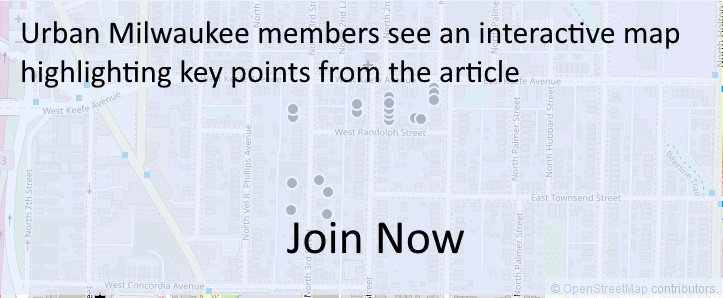
Existing members must be signed in to see the interactive map. Sign in.
If you think stories like this are important, become a member of Urban Milwaukee and help support real, independent journalism. Plus you get some cool added benefits.
Political Contributions Tracker
Displaying political contributions between people mentioned in this story. Learn more.
- May 5, 2015 - José G. Pérez received $10 from Cavalier Johnson
City Hall
-
Council Blocked In Fight To Oversee Top City Officials
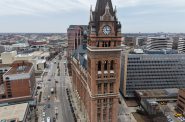 Dec 16th, 2025 by Jeramey Jannene
Dec 16th, 2025 by Jeramey Jannene
-
Latest Effort to Adopt New Milwaukee Flag Going Nowhere
 Dec 3rd, 2025 by Jeramey Jannene
Dec 3rd, 2025 by Jeramey Jannene
-
After Deadly May Fire, Milwaukee Adds New Safety Requirements
 Dec 2nd, 2025 by Jeramey Jannene
Dec 2nd, 2025 by Jeramey Jannene
Transportation
-
Congestion Pricing Cuts Air Pollution in New York City
 Dec 14th, 2025 by Jeff Wood
Dec 14th, 2025 by Jeff Wood
-
FTA Tells Milwaukee to Crack Down on Fare Evasion — Even Where Fares Don’t Exist
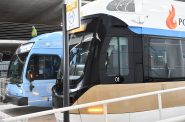 Dec 12th, 2025 by Graham Kilmer
Dec 12th, 2025 by Graham Kilmer
-
Will GOGO’s Bus Service Ever Get Going?
 Dec 9th, 2025 by Jeramey Jannene
Dec 9th, 2025 by Jeramey Jannene


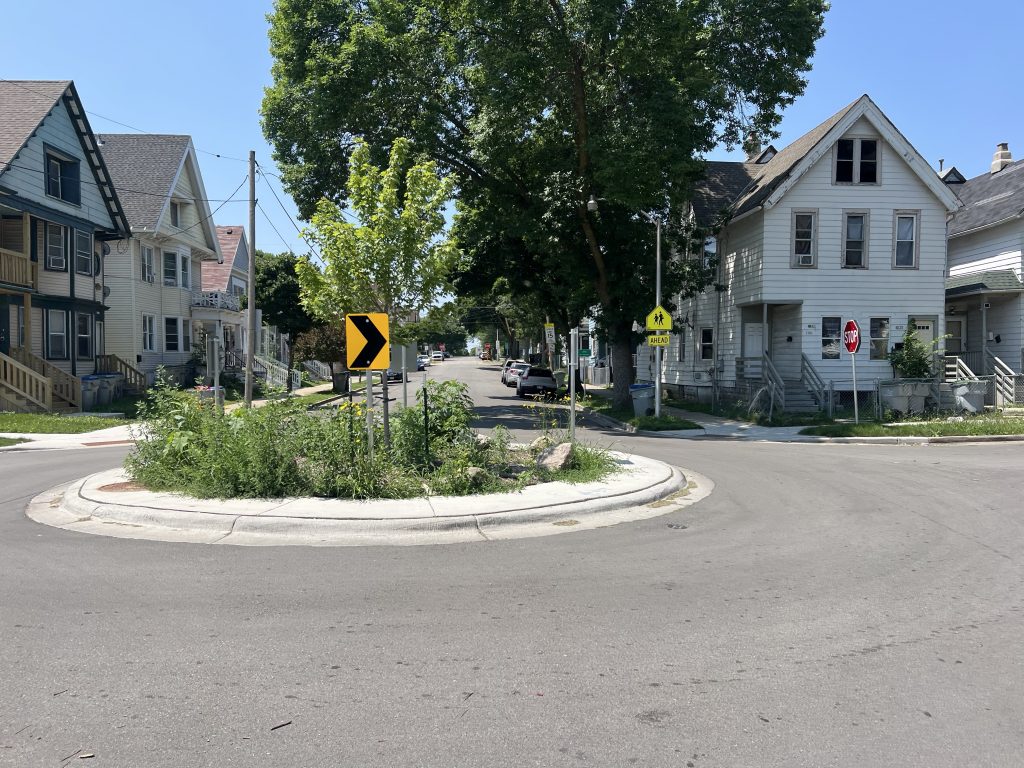
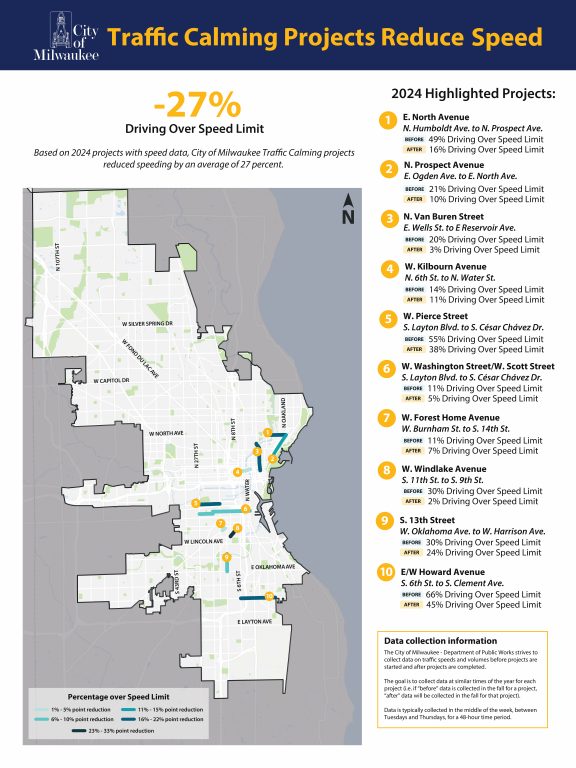
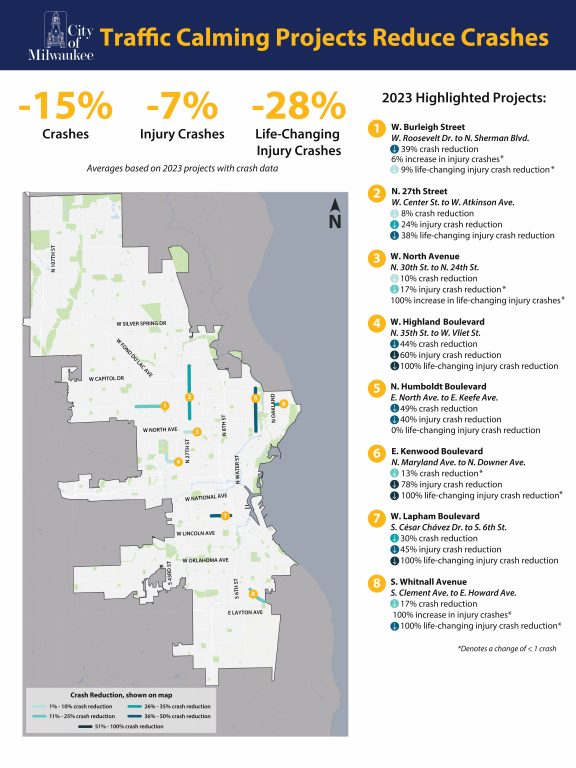



















We all want a reduction in reckless driving and speeding, but to turn the city into one lane streets and obstacle courses isn’t the way to go. I have observed these bump outs and narrowed streets prevent ambulances and fire trucks from getting through due to backed up traffic. This money should be used to hire more police to enforce the law. Apparently we do not have enough police to sit in a car with a radar gun and pull speeders over. Slowing down law abiding citizens and causing traffic jams is definitely going to result in the speed reduction stats the city has reported. It is quite a stretch to correlate this to a reduction in crashes as you would need to report a larger sample of priors years. The mayors dream of one million residents in Milwaukee will not happen unless we have good schools, safe streets and wide roads with traffic enforcement.
As always, there are three kinds of lies; little lies, damn lies and statistics.
> to turn the city into one lane streets and obstacle courses isn’t the way to go
Most of these projects have not reduced driving lanes, and those that have took away lanes which were not justified by the traffic on that street. Many Milwaukee streets were built before the freeways and don’t see nearly as much traffic as they were designed to handle. This is one contribution to our speeding problem, but also part of the reason that we can’t afford to maintain our streets. We just have too many lane miles for the amount of people in this city.
> Slowing down law abiding citizens and causing traffic jams is definitely going to result in the speed reduction stats the city has reported.
How would reduced speeding (breaking the law) be caused by slowing down law-abiding drivers? It seems that the statistic is directly measuring law-breaking and the number is going down.
> This money should be used to hire more police to enforce the law.
The money spent on traffic calming wouldn’t go nearly as far with the police department. Projects like speed humps or pinned-on bump outs just aren’t that expensive, and most projects get money from the neighbors or organizations (BIDs, etc) requesting them. Moreover, when the changes are part of a reconstruction it’s typically cheaper than replacing in kind. One example: the city saved about $800k by converting a lightly used parking lane to bike lanes on Lake Dr. On local projects like Walnut, the cost is directly tied to the reduced pavement, which also saves money in long term maintenance. Going back to my first point: the lanes are going away anyway, putting a bike path in is a tiny fraction of the cost of reconstruction projects so we might as well do it.
I have a brother-in-law in Franklin (where I am not from, by the way) who regularly complains about roundabouts. He’s a complaining kind of guy—a big part of his identity—and this has been one of his go-to “issues,” lately. His contention is that they are real problems for trucks and fire engines that “get stuck all the time.” The roundabouts his is familiar with are the big ones in rural-suburban south Milwaukee County and Racine Counties. He would rather die than set foot in Milwaukee proper. Now, I have never seen or heard of this happening and, if it were a problem, I’d expect it would find its way its way into the news and become a broader issue.
Some people have active imaginations that work to confirm their biases, which are already firmly entrenched.
Speed tables on my street have made a big difference. I’ve seen no issues for fire trucks or ambulances. Once in a while I forget and I get a jolt when I drive over one but that’s on.me. On the hand I never see the MPD enforcing traffic laws.
Burando: “As always, there are three kinds of lies; little lies, damn lies and statistics.” Please educate us as to how this data is a lie or is misinformation? Don’t malign collection of data and statistics, as this doesn’t apply. There are not applications of statistics through such tools as “analysis of variance,” to manipulate the observed reductions in speed or accidents or fatalities.
From AI: “Statistics is the science of collecting, analyzing, and interpreting numerical data to answer questions or draw conclusions about a population. It involves processes like gathering information (collecting), organizing it into a understandable format (organizing), summarizing key features (summarizing), and then using mathematical methods to understand patterns and make predictions or decisions based on that data.” Manipulating data in any way to get the cherry picked outcome represents unethical uses of statistics to support your preferred conclusion and is a “lie”.
Show us how the data presented has been manipulated or adjusted to support the outcome, would you?